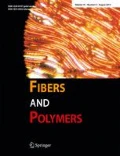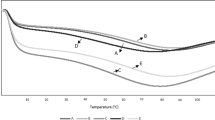Abstract
Knitted fabrics with a wide range of fabric construction varying in fibre type, yarn type is frequently preferred by consumers owing to their high comfort properties. Today new, functional and biodegradable, natural fibre based raw materials are mostly considered for knitted fabrics and clothing designs with a sustainable consumer manner. Collagen peptide added fibres are the recent improved regenerated cellulosic fibres which are known to be providing a skin friendly texture with high thermal and moisture comfort. Within this study, some performance properties such as thermal properties, water vapour permeability, water vapour resistance, air permeability as well as bursting strength of greige and dyed knitted samples made of 100 % Tencel™, Modal, Cupro, Umorfil®, combed cotton and carded cotton yarn were evaluated. ANOVA test was performed for the statistical evaluation of yarn and fabric properties. According to ANOVA results, regenerated cellulosic yarn type of knitted fabrics and the process type (untreated greige fabric or dyed fabric) were generally significant factors on mentioned performance properties of knitted fabrics. The results of experiments also revealed that beside the regenerated cellulosic fibres, new developed collagen peptide added Umorfil® fibre may be used as the raw material of knitted fabrics for sport garments with satisfying comfort results.
Similar content being viewed by others
References
G. Song, “Improving Comfort in Clothing”, Cambridge: Woodhead Publishing, 2011.
T. Röder, J. Moosbauer, K. Wöss, S. Schlader, and G. Kraft, Lenzinger Berichte, 91, 7 (2013).
J. C. Sakthivel and N. Anbumani, J. Text. App. Technol. Manag., 7, 1 (2012).
E. Dirgar, J. Text. Apparel/Tekstil ve Konfeksiyon, 27, 139 (2017).
S. Bhardwaj and S. Juneja, Studies on Home and Community Science, 6, 33 (2012).
http://www.kelheim-fibres.com/produkte/vi_te_uk.php (Assessed March 11, 2018).
H. Firgo, K. C. Schuster, F. Suchomel, J. Männer, T. Burrow, and M. Abu Rous, Lenzinger Berichte, 85, 22 (2012).
https://en.wikipedia.org/wiki/Cuprammonium_rayon (Assessed December 5, 2019).
G. Ö. Kayseri, F. Bozdoğan, and H. E. S. Lubos, J. Text. Apparel/Tekstil ve Konfeksiyon, 20, 208 (2010).
S. S. Bhattacharya and J. R. Ajmeri, Int. J. Eng. Res. Devel., 10, 16 (2014).
A. Basit, W. Latif, M. Ashraf, A. Rehman, K. Iqbal, H. S. Maqsood, and S. A. Baig, Autex Res. J., 19, 80 (2019).
V. Rajanbabu and J. Y. Chen, Peptides, 32, 415 (2011).
L. Najafian and A. S. Babji, Peptides, 33, 178 (2012).
S. Chattopadhyay and R. T. Raines, Biopolymers, 101, 821 (2014).
Beauty Fiber® Intro 20170609, “Umorfil® Beuty Fiber® Intro 20170609” (Assessed December 5, 2018).
TS EN ISO 139:2006, Standard Atmospheres for Conditioning and Testing, 2006.
E. Karaca, N. Kahraman, S. Omeroglu, and B. Becerir, Fibres Text. East. Eur., 3, 67 (2012).
F. Güney and İ. Üçgül, J. Text. Apparel/Tekstil ve Konfeksiyon, 20, 9 (2010).
N. Oğlakçıoglu and A. Marmaralı, Fibres Text. East. Eur., 15, 64 (2007).
I. G. Frydrych, G. Dziworska, and J. Bilska, Fibres Text. East. Eur., 10, 40 (2002).
ISO-ISO 9237, “Textiles — Determination of the Permeability of Fabrics to Air”, Geneva Switzerland, 1995.
ISO 13938-1, “Textiles — Bursting Properties of Fabrics — Part 1: Hydraulic Method for Determination of Bursting Strength and Bursting Distension”, Geneva, Switzerland, 1999.
E. Akcagün, M. Bączek, and L. Hes, J. Nat. Fib., 16, 199 (2019).
N. Özdil, A. Marmaralı, and S. D. Kretzschmar, Int. J. Thermal Sci., 46, 1318 (2007).
J. H. Mecheels and K. H. Umbach in “The Psychometric Ranges of Clothing Systems’, Clothing Comfort: Interactions of Thermal, Ventilation, Construction and Assessment Factors” (A. Arbor Ed.), pp.133–166, MI: Ann Arbor Science Publishers, 1977.
N. Oğlakcıoğlu and A. Marmaralı, J. Text. Eng., 17, 6 (2008).
E. Öner and A. Okur, The J. Tex. Inst., 106, 1403 (2015).
M. Havlova, Fibres Text. East. Eur., 22, 58 (2014).
E. Sarıoğlu and O. Babaarslan, J. Eng. Fibers Fabrics, doi:https://doi.org/10.1177/1558925019837810 (2019).
E. A. Elnashar, AUTEX Res. J., 5, 207 (2005).
Author information
Authors and Affiliations
Corresponding author
Rights and permissions
About this article
Cite this article
Çeven, E.K., Günaydın, G.K. Evaluation of Some Comfort and Mechanical Properties of Knitted Fabrics Made of Different Regenerated Cellulosic Fibres. Fibers Polym 22, 567–577 (2021). https://doi.org/10.1007/s12221-021-0246-0
Received:
Revised:
Accepted:
Published:
Issue Date:
DOI: https://doi.org/10.1007/s12221-021-0246-0




